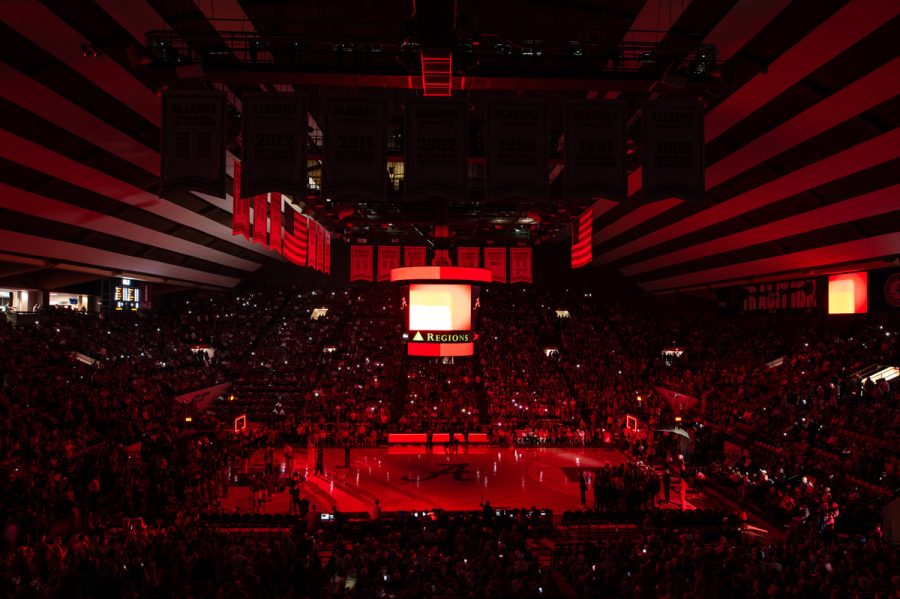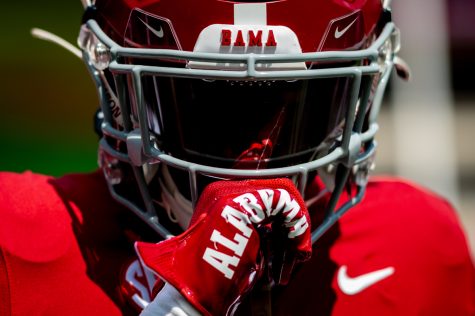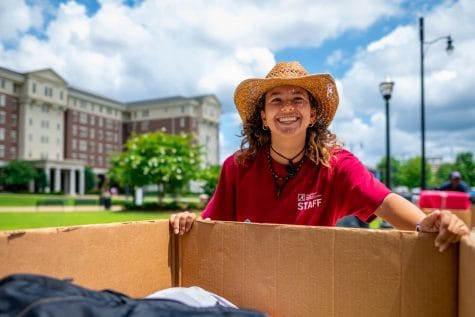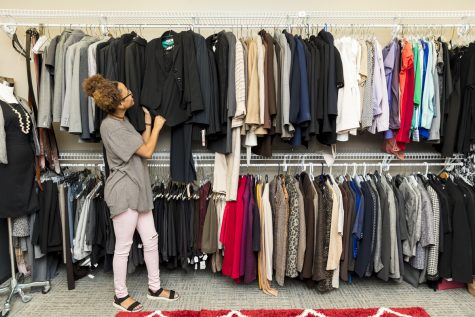Inflation delays new basketball arena timeline, administration remains hopeful
Coleman Coliseum lit up red before the Crimson Tide takes on the Georgia Bulldogs on Feb. 18, 2023 in Tuscaloosa, Ala.
March 1, 2023
As it stands, Alabama men’s basketball currently holds the No. 2 ranking in the AP top-25. On Feb. 13, the Crimson Tide rose to the top of the polls for the first time since 2002. A program once sputtering for the better part of a decade has risen to national prominence under the guidance of head coach Nate Oats, whose team currently looks destined for a deep run in March.
For 54 years, Coleman Coliseum has served as the Crimson Tide’s home for men and women’s basketball games, graduation events, gymnastics meets, concerts and even presidential appearances.
Coleman Coliseum’s prime has come and gone. While the location is serviceable, it lacks many features one would typically see in a modern arena. The concourse is somewhat grimy and lacks quality dining options for fans and students alike. The construction of the coliseum’s roof is comparable to that of an airline hangar, while aesthetically displeasing white panels are draped across its discolored ceiling. Imagery around the court often displays figures of outdated uniforms and dusty banners, which are coupled alongside awkward seating angles and public outcry for a new student-section block.
As Alabama athletics moves forward and continues their unprecedented success across the board, school administrators and boosters have begun to explore the process of building new quarters for many of their programs, but not without plenty of financial hurdles.
It’s no secret. Inflation has taken a toll on the economy.
After revealing initial renovation plans to Coleman Coliseum in 2018, The University of Alabama instead approved a plan to build a new 10,000-seat arena on campus in February 2022 with an estimated cost of $183 million.
Seven months later in September 2022, athletic director Greg Byrne noted that the University had not anticipated the subsequent price-hike during an on-air interview via “Hey Coach,” the Crimson Tide Sports Network’s flagship radio program.
“We weren’t expecting the highest inflation in 40 years but that’s reality,” Byrne said. “So, we’ve continued to go back to the drawing board and say, ‘What does that mean? What are the impacts that are going to be on there?’”
Byrne later reiterated that sentiment in a December 2022 interview with the Crimson Tide Sports Network, this time expressing an enhanced sense of urgency for the new arena’s evolving timeline.
“We’re trying to understand what that looks like. The age of Coleman,” Byrne said. “It’s not getting any younger. We need to find a way to address this. It’s important for our program. It’s important for coach [Nate] Oats and Kristy Curry and Ashley [Johnston] now with gymnastics and making sure that we are in the right position for what that looks like down the road.”
It’s cut and dry — Alabama is behind the eight-ball as long as they remain in Coleman, and the ever-cunning Byrne knows it. For men’s basketball in particular, a new arena could signify the checking of yet another box over in-state rival Auburn.
In June 2007, the Tigers announced plans for Auburn Arena, now dubbed “Neville Arena,” a state-of-the-art facility that would seat 9,121 occupants. Ground was officially broken in August 2008, and the doors officially opened in October 2010 at a completed cost of $86 million.
Adjusted for a cumulative rate of inflation, that number amounts to a total cost of just over $119.4 million in 2023, as the U.S. dollar had an average inflation rate of 2.22% per year between 2008 and today, producing a cumulative price increase of 38.95%.
The anticipated cost of the Crimson Tide’s new arena is double that figure.
“In the architects’ defense, they didn’t anticipate the level of inflation we’ve been under for the last year,” Byrne told the “The Next Round Live” in February. “So over about two or three more meetings, I would walk in there and they would have very grim-looking faces on them. ‘It’s gone up.’ ‘How much?’ ‘$25 million.’ The next meeting, another $25 million. The third one, now we think we could be close to $250 million. That was not what we were expecting.”
While the price tag continues to climb, the sixth-year athletic director refuses to remain complacent in dealings but acknowledges hardships surrounding the arena’s future arrival.
“I know sometimes people will say, ‘Hey, you’ve got the money,’ but I’m like, ‘Well, I haven’t quite found that money,’” Byrne said. “We have a fiduciary responsibility for our athletic department. That’s part of what we do, and at the same time, too, we’ve got to do everything we can to make sure we grow the program and put us in the best possible position. With the momentum that we have with our basketball programs and gymnastics, it is important that we find some solutions down the road. So, we’re working on it, and obviously it is something that we all want very much.”
Oats, the leading candidate for SEC Coach of the Year, has also recognized the importance of a new arena, but remains quick to trust the athletic department’s oversight in the process itself.
“We need to have a great home environment every single game,” Oats said earlier in the month.
“With a new arena, I think we can get a lot closer to that. I think it’s a big deal for the future. … I think they were close and ready to go until inflation obviously hit building costs quite a bit,” Oats said. “They’re trying to figure some more stuff out at this point.”
It’s a matter of when and where, not if. A new arena will soon grace the University of Alabama’s campus. After numerous setbacks, the need for additional fundraising has raced to the forefront of the athletic department’s to-do list amidst an unprecedented economic climate. While the inevitable opening of a new facility remains clear as day, it now begs the question of how long coaches, fans and players can continue their patience during financial uncertainty. However, if past comments are any indication, school administrators appear eager to reward their subsequent endurance in due time.











